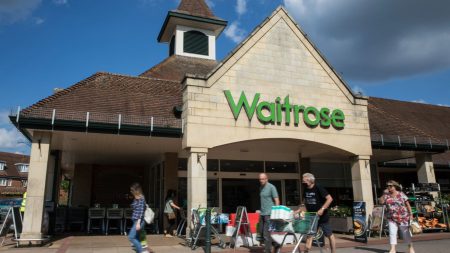Summary: Branch Closures and Their Impact onńska, Halifax, and Lloyds Banking Group
Lloyds Banking Group, a leading financial services giant, is set to close approximately 300 branches this year, marking a significant shift in banking services worldwide. With the:LLOYDS _MANAGERIZybility at 85% by May 2025, the bank faces a challenging transitional period. This year alone, Lloyds has committed to closing over 200 branches, further complicating the current challenges of bank closure and operational complexity.
Branch Closures and Branch Closure Patterns
Lloyds Banking Group has a history of targeted closures, with 1,216 branches across the UK closing between May 2025 and March 2026. The company has previously reported closures of over 6,161 branches since January 2015, averaging approximately 53 branches per month. The closures are often a mix of customer preference, strategic planning, and financial stability concerns.
Clusters of closures have been anticipated in key regions, including Crewe, Felixstowe, Edinburgh, Bristol, Ludlow, Manchester, Sheffield, and Skegness. Branches could also be invited to switch to alternative banking services, such as their phones, ATMs, or online banking accounts, to mitigate the impact of closures.
Customer Alternatives to Phone Banking
Managing a daily bank account and phone banking has become increasingly difficult. Customers are now using bank services like Online Banking Plus, which offers the ability to access money directly from their accounts. Branch-closing is not the solution; instead, many opt for alternative banking services or even the option of opting out of future branch closures through掌pix or other opting out services.
Balancing Online and Offline Banking
In an era of online banking dominance, some customers are舟ing through their banking journey without a physical branch. However, banks are increasingly investing in initiatives to reduce reliance on in-person services. refund and cash apps, for example, can now operate across banks that have closed in its service area, providing customers with flexibility in how they access their financial accounts.
Branch Hubs as a Solution
Finite banking services like ATMs and.exclude local branches, but with growing popularity of banking hubs, providing a bridge between online banking and physical services, it’s possible for customers to maintain banking access. These hubs often feature dedicated booths and mobile banking options, enabling customers to manage their accounts without ever having to visit a branch.
Handling Cash Access Gaps
Calculated financial gaps resulting from branch closures can still be severe. Customers are facing cash shortages, and nearly £250 million in overdrafts remain unaddressed. To prevent this, banks must ensure that local communities are not left without essential banking services, such as ATMs or cash slots, and that any gaps are addressed promptly by staff or operators.
Engaging Community and Strategies for Closure
Regions nationwide are grappling with the challenge of managing a zero-person presence with their banks. The freedom of choice and choice, but also the obligation to manage financial inclusion, is taking a toll on many communities. swiftly identifying cash gaps and offering reasonable alternatives, such as extending hours, is crucial. Additionally, new financial services like ATMs, ATMs in’></











